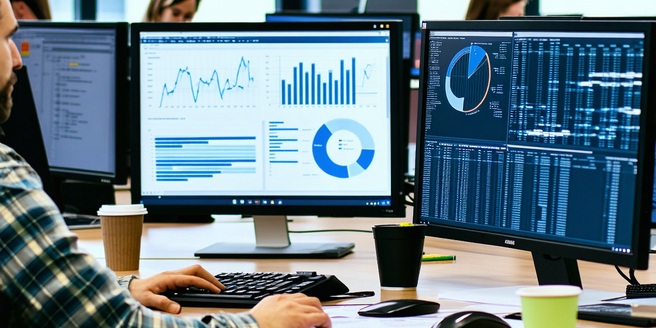
1. Understanding Different Types of Tax Software
In the rapidly evolving field of finance, tax software has become indispensable. Understanding different types can help businesses and individuals save time and money. There are three main types: basic, premium, and self-employed. Basic versions typically cover simple returns, suitable for individuals without complex financial situations. Premium versions offer expanded features like itemized deductions, making them ideal for those with more detailed filings. Self-employed versions cater to freelancers or small business owners, providing tools to manage business expenses and income streams. By selecting the right software, users can optimize their financial tasks efficiently and accurately.
2. Key Features to Look for in Tax Software
When selecting tax software, certain features can greatly enhance your filing experience. Look for user-friendly interfaces that simplify data entry, especially for tax novices. Integration with financial institutions and easy import of W-2 and 1099 forms is crucial. Robust security measures are essential to protect sensitive information. Additionally, efficient error-checking features can reduce mistakes, saving you time and potential penalties. Accessibility across multiple devices allows for convenience and flexibility, while comprehensive customer support ensures help is available when needed. By prioritizing these features, users can make informed decisions and file with greater confidence and accuracy.
3. Top-Rated Tax Software in 2023: A Comparative Review
In 2023, the landscape of tax software is highly competitive, with several top contenders emerging as favorites. The ever-evolving tax regulations make it crucial for these software companies to regularly update their offerings. TurboTax remains a strong choice, praised for its user-friendly interface and exhaustive support options. H&R Block competes closely, offering robust in-person assistance in addition to digital solutions. For those seeking affordability, Tax Slayer provides comprehensive features at a budget-friendly price point. Credit Karma Tax, now rebranded as Cash App Taxes, offers free filing with some limitations. Each software has unique strengths, so comparing user needs against available features is key to choosing the ideal option.
4. How Tax Software Enhances Accuracy and Efficiency
Tax software revolutionizes the accuracy and efficiency of tax filing. It automatically calculates figures, reducing the chance of human error. Software updates ensure compliance with the latest tax regulations, giving peace of mind that returns are accurate. Built-in error checks further guarantee that potential mistakes are flagged before submission. This greatly diminishes the risk of auditing issues or penalties. Additionally, the efficiency of electronic filing shortens processing times, allowing for quicker refunds. By streamlining data entry and automating computations, tax software simplifies and speeds up the tax preparation process, freeing up time for other priorities.
5. User Experiences: Pros and Cons of Popular Tax Software
User experiences with popular tax software vary widely, with both benefits and drawbacks noted. TurboTax users appreciate its intuitive design and extensive guidance, but some find its premium tiers costly. Many users rely on reviews to make informed decisions about their software choices. H&R Block is lauded for its hybrid approach of in-person and digital services, yet some users report interface lags. Tax Slayer earns praise for affordability, yet advanced helps may seem limited compared to competitors. TaxAct offers comprehensive options but receives mixed feedback on customer service responsiveness. Reviewing user feedback can aid in selecting software that aligns with personal needs and budget constraints.
6. Future Trends in Tax Software Development
Future trends in tax software development focus on enhancing user experience and adapting to technological advancements. Artificial intelligence integration is expected to further personalize and expedite filing processes, analyzing past data to offer tailored suggestions. Cloud-based solutions will ensure access across devices, improving convenience and collaboration with tax professionals. Enhanced security protocols will address growing concerns over data breaches, ensuring sensitive information remains protected. Additionally, a focus on sustainability may see providers offering paperless options, reducing environmental impact. These developments aim to make tax preparation more intuitive, secure, and versatile, catering to the changing needs of users and tech landscapes.
